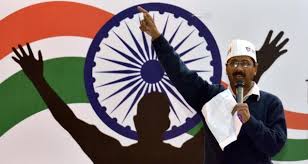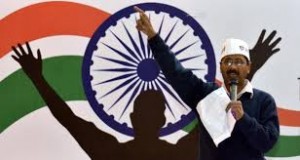A participatory budget for the capital of India! That is quite a thought. Such step by the Aam Aadmi Party (AAP)-led government literary echoes the true words of Abraham Lincoln – Democracy of the people, by the people and for the people. This seems to be an updated version of the weekly or monthly Jan Sabha held outside the Delhi Secretariat and organised during the 49-day government of AAP in 2014. As reported, Mr. Kejriwal drew parallels of this meeting for AAP budget with the town hall meetings in The US, though no voting is conducted in the latter. One may even liken it to the village panchayats, but I beg to differ. While reading about it in the newspaper, my mind raced 226 years back from now to the French Revolution. The participatory budget meeting reminded me of Tennis Court Oath of 1789 where the Third Estate (middle class professionals, merchants, officials) took the responsibility upon themselves to draft a constitution for France. The difference between the two events is that the Delhites present in the meetings were more sensible, calm and better-tempered than the Frenchmen and had met to devise an economic plan rather than a political set up. The similarity is that both sets of public belonged predominantly from middle class.
Tennis Court Oath was a decision taken in haste. Similarly, a participatory budget meeting does not seem effective to me in the long run, although it has only taken baby steps towards a proper structure. It may be naive of me to call it ineffective but I cannot hide my apprehensions about it.
Sunday’s budget meeting was held in three colonies of one constituency. If AAP is looking to implement it throughout Delhi in future, then it will be getting suggestions from 70 constituencies. Let me explain it using mathematical sets. Consider the 70 constituencies as 70 sets or circles. Each set contain problems and areas in which people of that constituency want the government to allocate funds for. The most important problem will be ranked 1 while the least important will be ranked 10. This will be done for 70 constituencies. It is obvious that many suggestions of one constituency will be same as suggestions of the other, whereas some of them will also differ. One can then create intersections between the sets/circles to show the common problem of the constituencies.
Doing this for all 70 sets will result in a group of problems common to all or most of the constituencies. Such areas of worry will be those which was known to all even before participatory budget was organised. Since each suggestion was given a rank, accordingly funds will be allocated. Those problems which were less common to most of the constituencies will get least amount of funds for allocation. Thus we will come back to the original position where budget was planned by the economists within four walls and behind closed doors who know the common areas of worry in Delhi. If this is what turns out in future, participatory budget may seem as waste of time.
The Central Union Budget has been presented in traditional way for so many years where everything is planned for so many years where allocation of funds is planned as per certain national, international, trade, economic and taxation policies. Often it has happened that the budget was not adequate and people have criticized it for lack of participation in decision making at local level. This way the participatory budget is a revolutionary step. But is it possible to meet the demands of the people. After all, economics is a problem of scarcity. Let us see how the AAP’s apna budget solves it.
Click here for government certification in Accounting, Banking & Finance





19 Comments. Leave new
You’ve analysed the whole thing very well Akul 😀
Thank you Kriti. Thanks for reading.
good efforts!
Thank you Chitranshi.
Great analysis on AAP budget 🙂
Thank you Anusha.
Your efforts relating to the topic is amazing..
Thanks Akshita. Hope I can maintain it in future.
You’ve analysed the whole thing very well
Again very appealing topic and related with common people.
Thanks Tarun.
good analysis!
nice one
nice work!!
Critically analysed indeed
Thanks Aishwarya.
Read many blogs under the same topic 😀
but this is the best one , the content was really good 😀
and the presentation too ;D
Good work D
Keep it up 😀
Thanks Anirudh. It means a lot to me when my readers read the whole article and claim it to be the best among all articles under the same topic. I hope I can keep up the good work.
nicely researched….